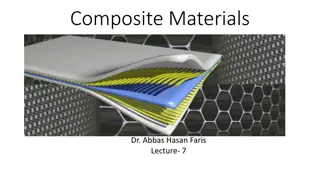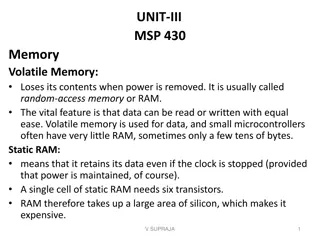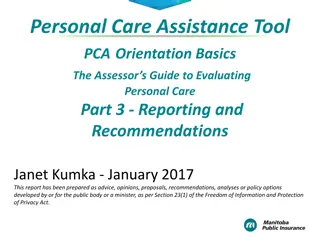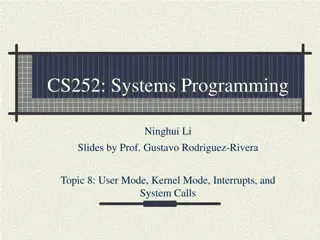
Understanding Range of Motion (ROM) in Physical Therapy
Learn about Range of Motion (ROM) measurement, types, exercises, and risks in physical therapy. Discover how ROM is crucial for assessing and treating injuries, and the different ways it can be measured in a painless manner.
Download Presentation

Please find below an Image/Link to download the presentation.
The content on the website is provided AS IS for your information and personal use only. It may not be sold, licensed, or shared on other websites without obtaining consent from the author. If you encounter any issues during the download, it is possible that the publisher has removed the file from their server.
You are allowed to download the files provided on this website for personal or commercial use, subject to the condition that they are used lawfully. All files are the property of their respective owners.
The content on the website is provided AS IS for your information and personal use only. It may not be sold, licensed, or shared on other websites without obtaining consent from the author.
E N D
Presentation Transcript
StudyMafia.Org Range Of Motion (ROM) Submitted To: Submitted By: Studymafia.org Studymafia.org
Table Contents Definition Introduction How ROM is measured? Types of ROM ROM Exercises Risks of ROM Conclusion 2
Definition Range of motion (ROM) is a measurement of how far you can move a specific joint or other body part. 3
Introduction It is usually measured during a physical therapy evaluation or treatment for an injury. Everyone's natural range of motion is different. Your physical therapist lines up the arms along your body, and then he or she can move your body in specific directions and measure the amount of motion that occurs. 4
How ROM is measured? Range of motion is measured by your physical therapist using a device called a goniometer. A goniometer is a metal or plastic handheld device with two arms. Numbers representing angular distance are on the device, much like a protractor 6
How ROM is measured? Measuring ROM is usually a painless procedure. There are some instances after surgery or injury where measuring the ROM may be painful, but the pain is usually short-lived and only occurs during the measurement. They are passive (PROM), active-assistive (AAROM), and active (AROM).
Types of ROM Passive ROM It occurs around a joint if you are not using your muscles to move. Someone else, like your physical therapist, manually moves your body while you relax. A machine may also be used to provide passive ROM. For example, after knee replacement surgery, you may not be able to use your muscles to move the knee. 8
Types of ROM Active-assistive ROM It occurs when you are able to move your injured body part, but you may require some help to move to ensure further injury or damage does not occur. The assistance that helps move your body can come from you or from another person. It may also come from a mechanical device or machine. 9
Types of ROM Active ROM It occurs when you use your muscles to help move your body part. This requires no other person or device to help you move. Active ROM is used when you are able to start moving independently after injury or surgery, and little or no protection from further injury is needed. 10
ROM Exercises ROM exercises are especially beneficial when a situation such as a stroke or an accident has left you bedridden or wheelchair-bound. If you are unable to move, medical professionals will move your muscles and bend your joints for you on a daily basis, working you toward potential recovery. 11
ROM Exercises With AROM exercises, you strengthen your muscles when you actively engage them in movement. This is good for your overall health and improves your mobility over time. You can improve your active range of motion by holding movements or stretches for at least 30 seconds. 12
ROM Exercises Keep in mind that you want to do a variety of range-of-motion exercises that challenge your entire body and not a single muscle group alone. As an example of AAROM exercise, if you break your ankle, you must stop moving that part of your body as it heals. 13
ROM Exercises Once your ankle heals and is ready to bear weight, you may still find it hard to move. That s because you ve lost range of motion due to the lack of use. You may lift your foot up and press it down, but it only goes so far. A physical therapist can apply pressure to your foot to move it just a little more than your body allows. 14
Risks of ROM Stretching a little beyond your limit is good for increasing your range of motion. But pushing too far may lead to a muscle tear or damage to a joint. When you re not in control of a movement, there s a greater chance of injury. 15
Risks of ROM There may be instances of movement where you only use your muscle in a single way. If you keep repeating a particular motion without changing up how you use your muscle, you may limit your range of motion. 16
Risks of ROM For example, if you work out in a gym and complete a series of exercises that work your biceps, you strengthen those muscles. If you continue to focus on this muscle group without adding in motions that work your triceps, on the back of your arms, you may limit the range of motion in your arms. 17
Conclusion Range of motion is the capability of a joint to go through its complete spectrum of movements. It can be passive or active. Passive range of motion can be defined as what is achieved when an outside force, such as a therapist, causes movement of a joint. It is usually the maximum range of motion. 19






















